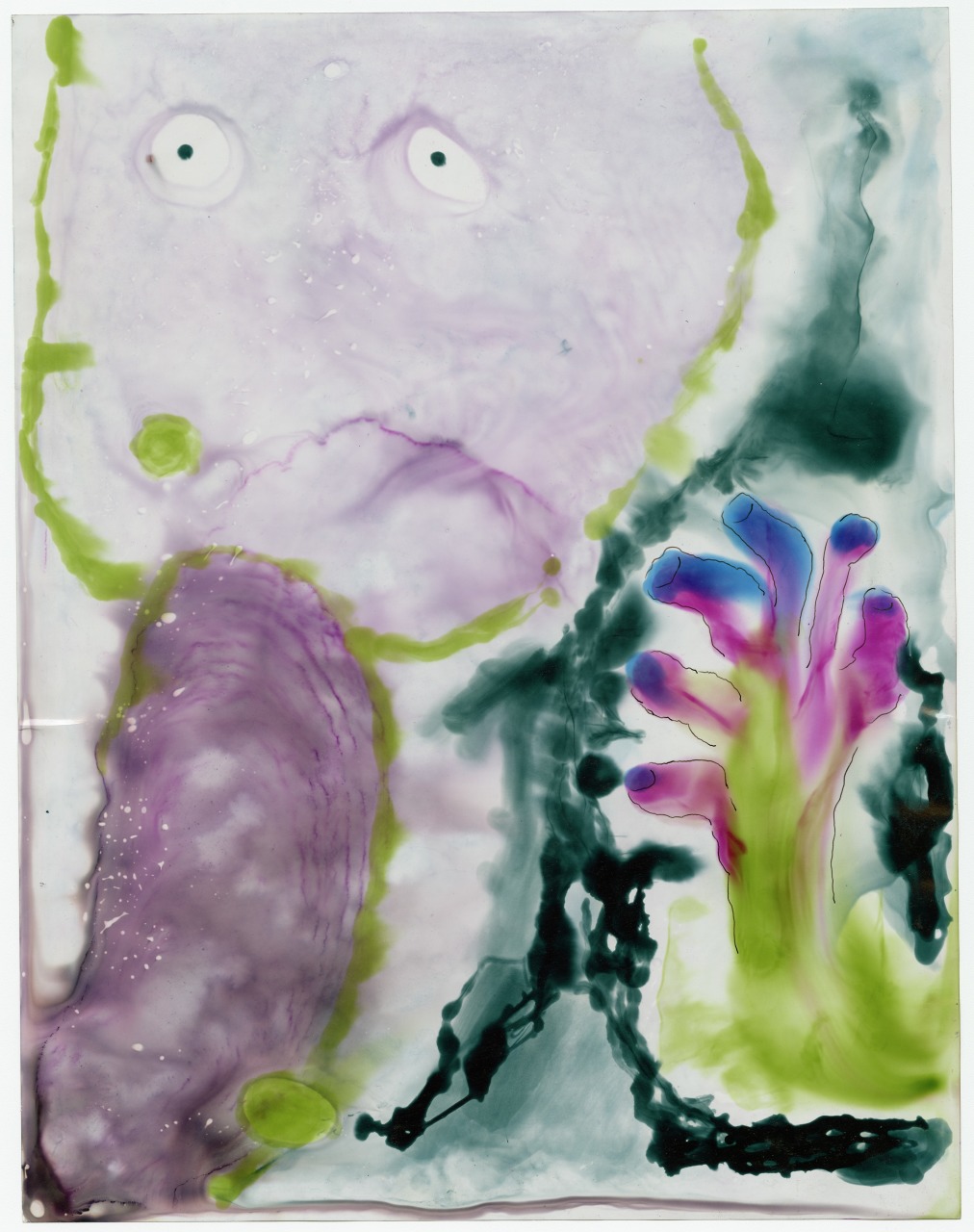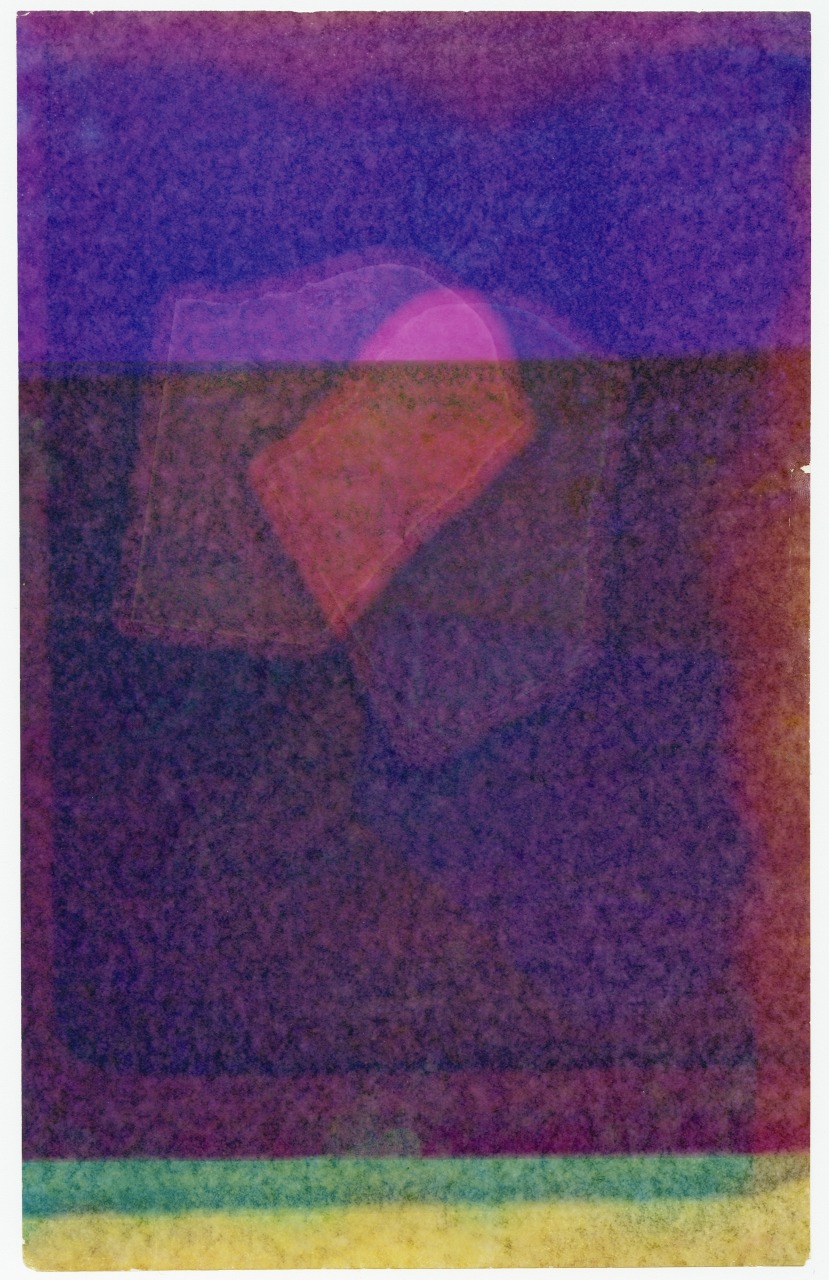Clarence John Laughlin (1905–1985) was an innovator in the use of photographic materials to create nonphotographic artwork.
Laughlin was born near Lake Charles, Louisiana, and lived in New Orleans for most of his life. During World War II, he worked in the photography lab of the Office of Strategic Services in Washington, D.C. There, his duties included working with the wash-off relief process, which the Kodak Company had introduced in 1935. This color photographic process was a predecessor to the dye transfer process released in 1946, which is described elsewhere in the exhibition.
For Laughlin, these color materials were ideal tools for pushing the limits of photographic vision. The paper used in the wash-off relief process is coated with gelatin but is not light sensitive. He would puddle dyes on the paper and tilt the surface, allowing the dyes to run and mingle in unexpected ways, which Laughlin took advantage of.
In addition to using the dyes in this free-form manner, he also used a paintbrush to create specific forms and areas of color, the character of which would complement the abstract image. In some instances, Laughlin pressed the paper into the crystallized residue of the chemicals and captured their geometric shapes.

Color Experiment, “Anxiety”
Eastman Wash-off Relief Process print; ca. 1940
by Clarence John Laughlin
The Clarence John Laughlin Archive at The Historic New Orleans Collection, 1981.247.2.2

Color Experiment (untitled)
Eastman Wash-off Relief Process print; ca. 1940
by Clarence John Laughlin
The Clarence John Laughlin Archive at The Historic New Orleans Collection, 1981.247.2.41
